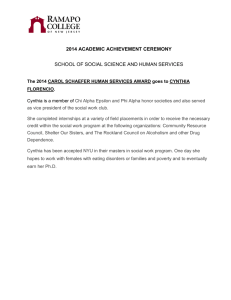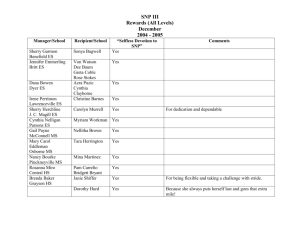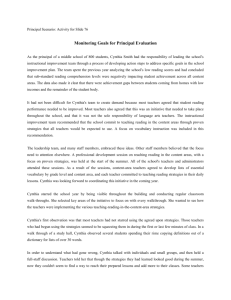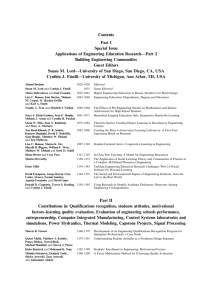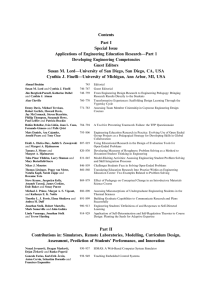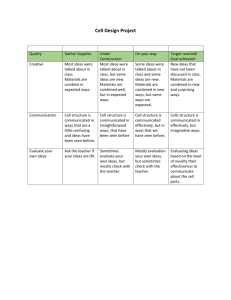Communication Plan
advertisement
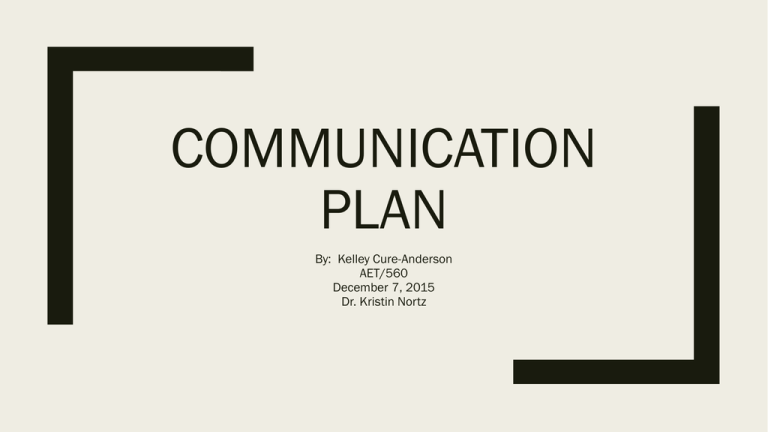
COMMUNICATION PLAN By: Kelley Cure-Anderson AET/560 December 7, 2015 Dr. Kristin Nortz Objectives-U.S. Cellular’s Organizational Change, New 5-Step Selling process ■ Describe how to launch the communication plan ■ Describe technology needed to communicate plan ■ Determine how to test plans effectiveness ■ Describe how to generate feedback ■ Describe how to address negative response and communication ■ Describe how the communication plan can affect organizational change How to Launch Communication Plan Communication plans have four phases: 1. Pre-change Approval-change discussion and approval starts with top management 2. Creating the need for change 3. Midstream change and milestone communication-informing people of the change 4. Confirming/Celebrating change success-informing employees of the success of the change (Tupper, Deszca & Cynthia (2012, p. 319) Technology Used ■ PowerPoint Presentations ■ Training Classes, in-person and webinars ■ Email ■ Team Meetings with call center and store leaders ■ Communication letters ■ Brochures and in-store advertisement How to Test Plan’s Effectiveness ■ Goal planning with employees ■ Team role-play meetings and knowledge checks ■ Observed customer interaction and sales process at work ■ Gather feedback from employees ■ Team morale check ■ Employees use of sales tools provided Generating Feedback for Continuous Improvement In the case of this organizational change feedback from the employees, leaders and customers will be essential to ensure continuous improvement. ■ Feedback sought from employees and leaders through one on ones weekly with managers ■ Survey Monkey used for surveys for customers and employees ■ Sales revenue will show success of communication plan, if improved as planned with new sales process ■ Feedback should be asked for constantly Addressing Negative Response and Communication The best way to address negative communication is to have open communication with employees and to address issues immediately. Kotter & Schlesinger discussed six general change strategies to influence others: ■ Education and Improvement ■ Participation and involvement ■ Facilitation and support ■ Negotiation and agreement ■ Manipulation and co-optation ■ Explicit and implicit coercion (Tupper, Deszca & Cynthia, 2012, p323) How the plan affects Organizational Change Communication is key to employees jumping on board with a change. In order to have successful organizational change leaders must communicate openly. ■ Open, often communication ■ Clearly explain the “why’s” of the change, and the “what’s in it for them” ■ Poorly communicated change can negatively impact organizational change ■ When communication plan is followed employees know what needs to be done and how they can succeed Conclusion In conclusion, without a communication plan, organizational change success is at risk. Change must be thoroughly planned and communicated in order to ensure employees will support the change and move forward. Leaders need to understand the plan and they need to stick to the plan to ensure consistent messaging and success. There needs to be pulse checks throughout the teams to ensure employees are feeling good about the change and to ensure they are able to support it and understand it. References Tupper, C., Deszca, G. & Cynthia, I. (2012). Organizational change: An action orientated toolkit. (2nd ed.). Thousand Oaks, CA: SAGE.

